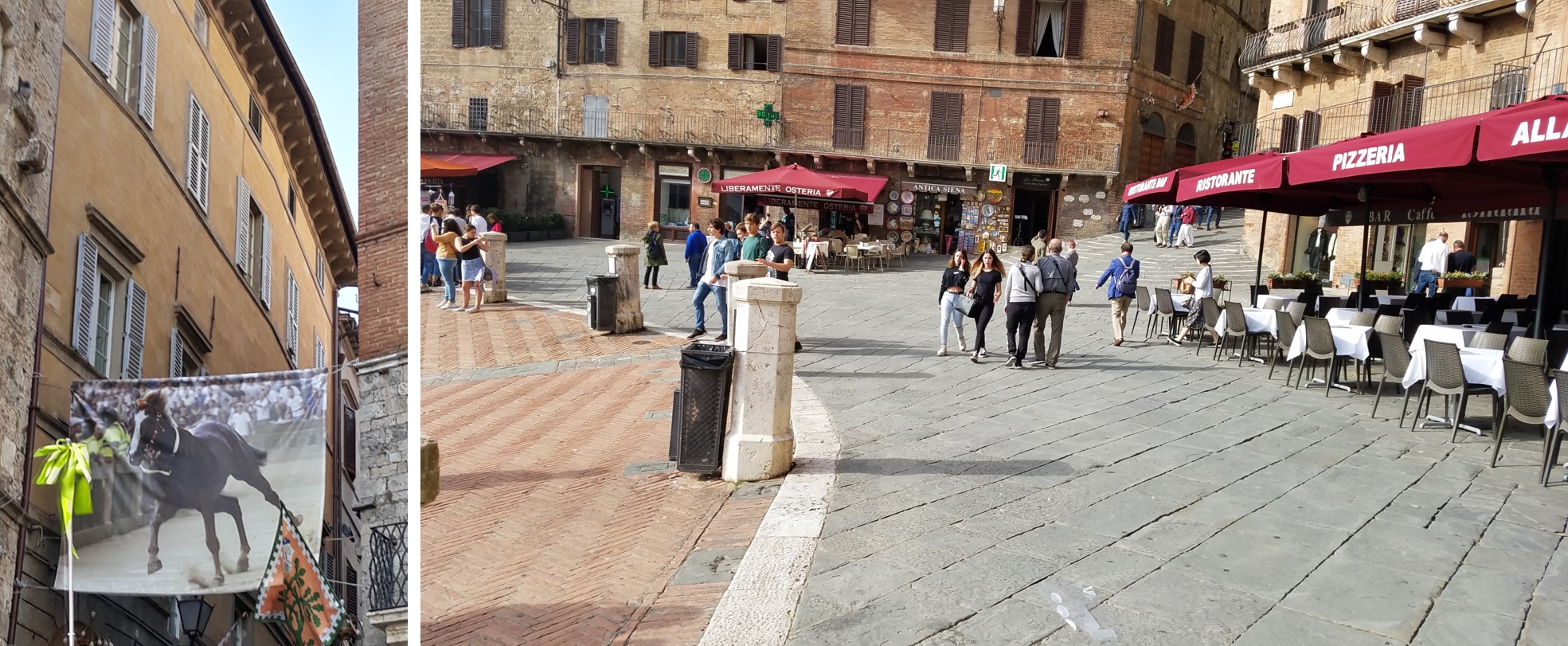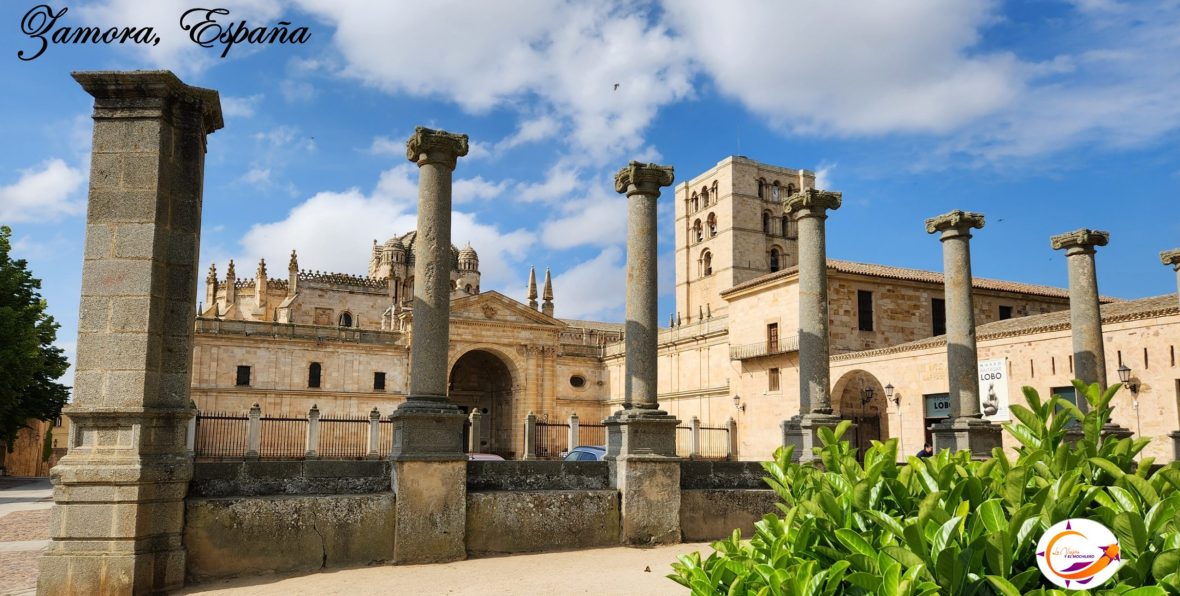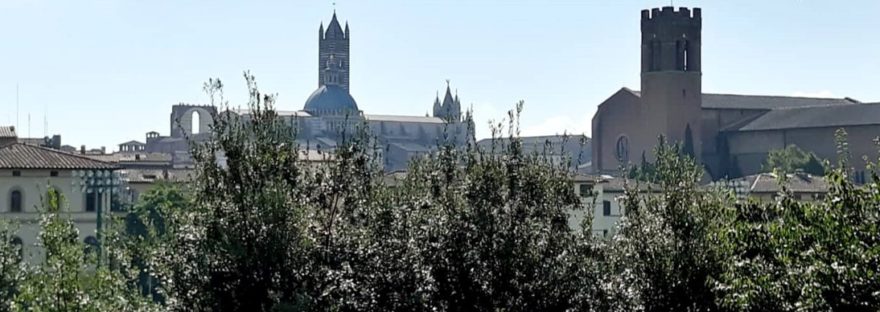It is said that the Tuscan city of Siena (or Sienna) was founded by the “Saina” tribe of the Etruscans sometime between 900 and 400 BC. C. It is between the twelfth and sixteenth centuries that the golden age of Siena occurs, the culminating point of medieval times. Reason why it is recognized as the “ideal medieval city” by UNESCO.
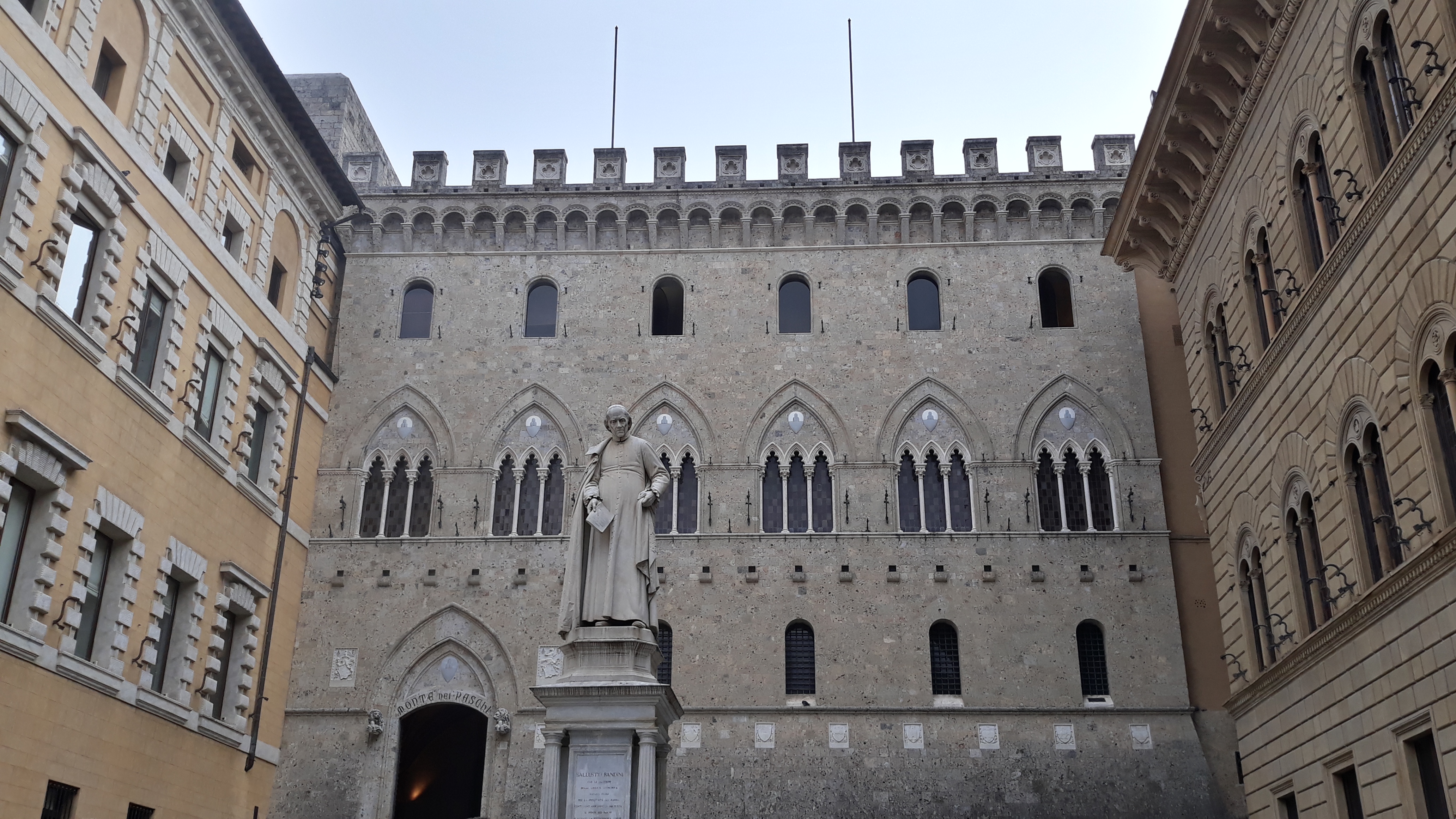
The Piazza del Campo, the central “square” of the city, is built during the 13th century at the intersection of the three main roads leading to Siena. This city center was destined to be the main meeting place for all political, civic and holiday activities. The square has an oval or fishtail shape, different from the square proportion that we are used to seeing generally in the squares.
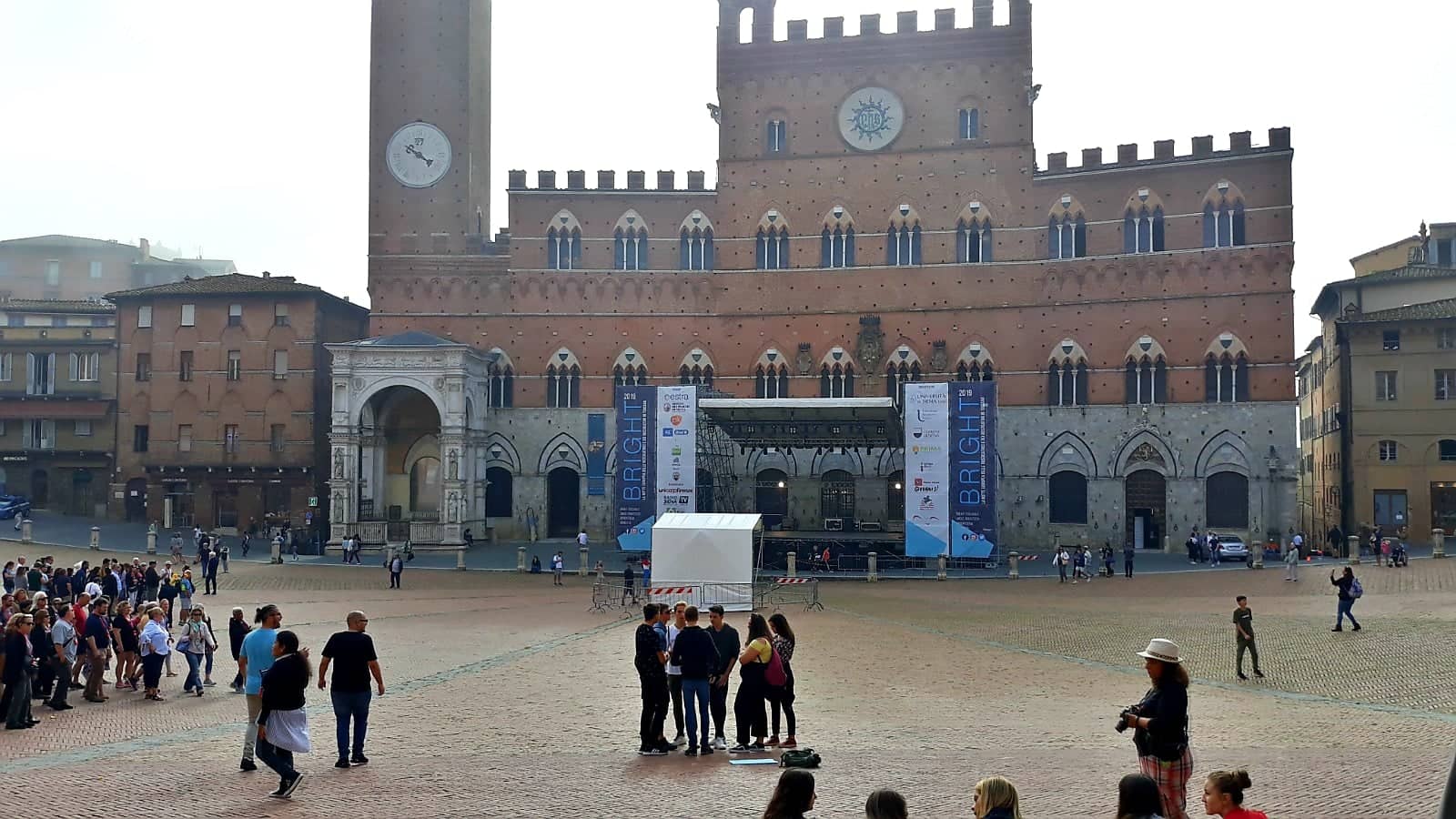
The government of Siena in 1297 defined specific guidelines for a homogeneous architecture of all the buildings that surround or face the city center. The Plaza itself is divided into nine sections, this represents the shared governance between nine governors, the famous “Government of the Nine”.
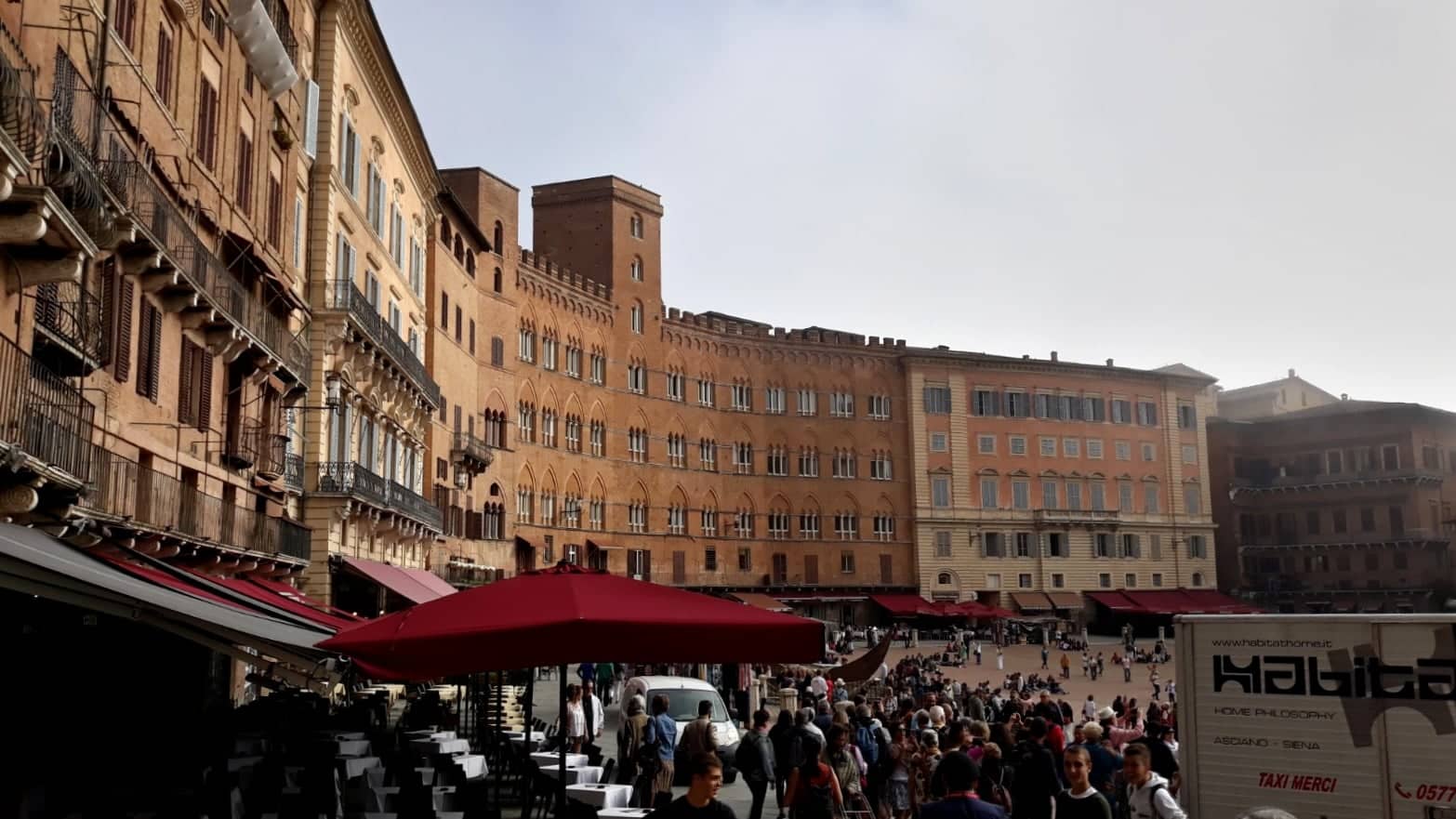
Overlooking the square is the “Torre del Mangia”, built during the fourteenth century. The name of the tower means “Torre del Comensal”. This in reference to the first bell tower, Giovanni di Balduccio, better known as “Mangiaguadagni” (profit-eater). It is said that Giovanni wasted all the pay he received as the chime ringer in food.
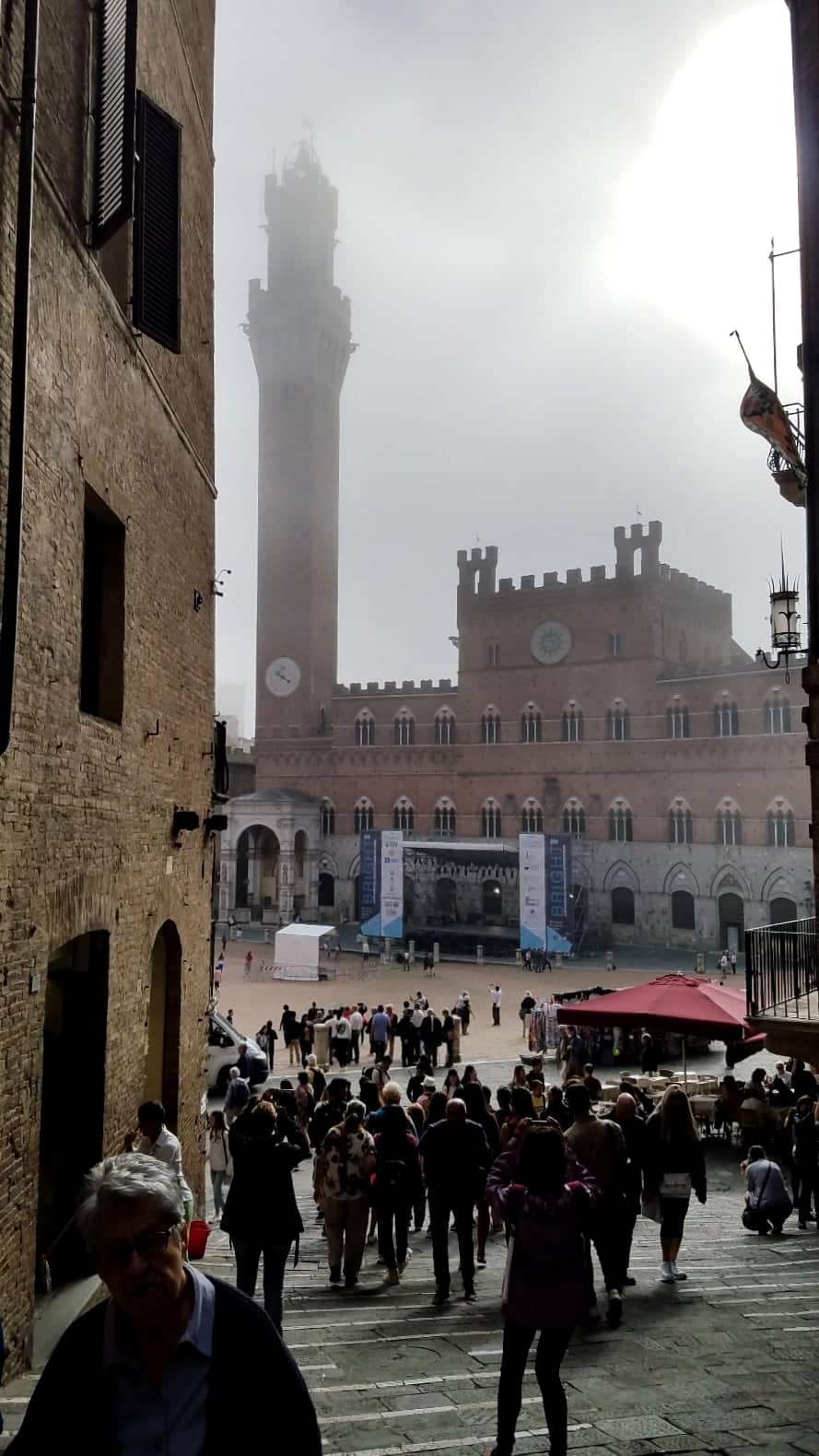
Twice a year, the square is transformed into a horse racing track in which “El Palio” is celebrated. This is the ancient millenary tradition that is celebrated passionately by the people of Siena. The horses that represent 10 (3 raffles) of the 17 neighborhoods of the city, compete in the events of the “Palio de Provenzano”, in honor of the Virgin of Provenzano (July 2) and the “Palio de la Asunción”, in honor of the Assumption of the Virgin Mary (August 16).
